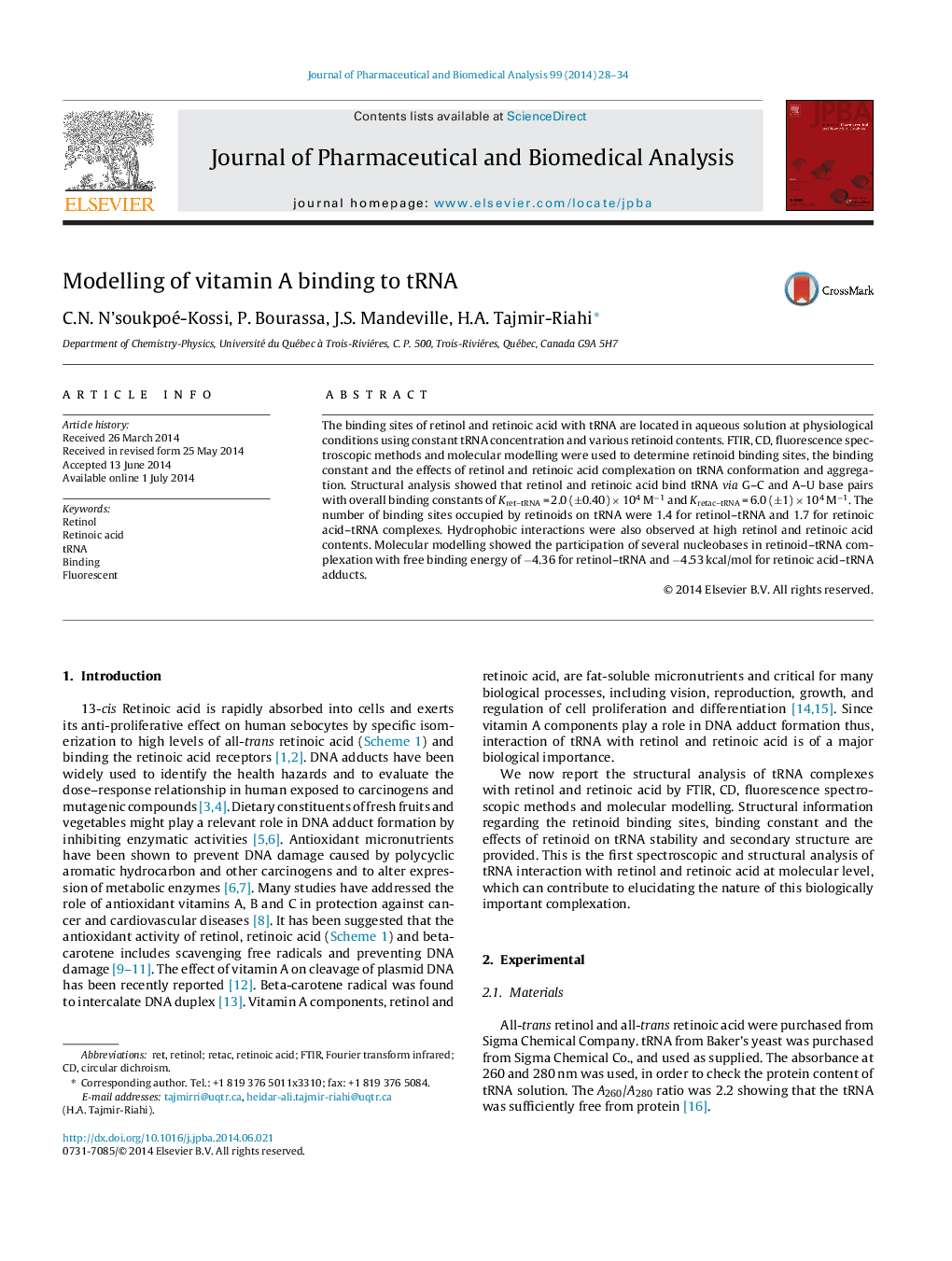| Article ID | Journal | Published Year | Pages | File Type |
|---|---|---|---|---|
| 1220987 | Journal of Pharmaceutical and Biomedical Analysis | 2014 | 7 Pages |
•Retinol and retinoic acid bind tRNA via hydrophobic and hydrophilic contacts.•The bindings occur via guanine, adenine, uracil donor atoms and the PO2 group.•Retinoic acid forms more stable complexes than retinol.•tRNA aggregation and particle formation occurs at high retinoid concentration.
The binding sites of retinol and retinoic acid with tRNA are located in aqueous solution at physiological conditions using constant tRNA concentration and various retinoid contents. FTIR, CD, fluorescence spectroscopic methods and molecular modelling were used to determine retinoid binding sites, the binding constant and the effects of retinol and retinoic acid complexation on tRNA conformation and aggregation. Structural analysis showed that retinol and retinoic acid bind tRNA via G–C and A–U base pairs with overall binding constants of Kret–tRNA = 2.0 (±0.40) × 104 M−1 and Kretac–tRNA = 6.0 (±1) × 104 M−1. The number of binding sites occupied by retinoids on tRNA were 1.4 for retinol–tRNA and 1.7 for retinoic acid–tRNA complexes. Hydrophobic interactions were also observed at high retinol and retinoic acid contents. Molecular modelling showed the participation of several nucleobases in retinoid–tRNA complexation with free binding energy of −4.36 for retinol–tRNA and −4.53 kcal/mol for retinoic acid–tRNA adducts.
Graphical abstractFigure optionsDownload full-size imageDownload as PowerPoint slide
